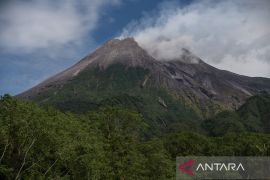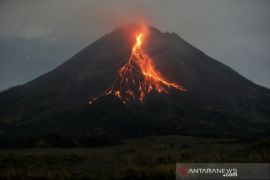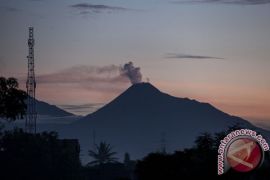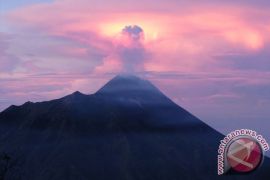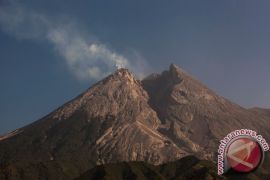"Ash rain shrouded Sangup Village at around 12:30 WIB (Western Indonesian Standard Time). Ash rain mixed soft sand blanketed Sangup," Sri Hartanto, the secretary of Sangup Village, Tamansari Sub-district, Boyolali, stated.
Several other upper areas, including Dukuh Beling and Sudimoro, were also covered by the volcanic ash.
The eruption impaired the day-to-day activities of residents of villages located in the east of the volcano's peak, as they were compelled to stay indoors to avoid the volcanic ash.
Hartanto noted that the avalanches of hot clouds resulted in volcanic ash being set adrift by the wind to the east and descending upon Sangup Village, Tamansari District, and its surroundings.
Related news: Locals flee as Mt Merapi spouts massive ash column again
The villages of Lanjaran and Mriyan in Tamansari Sub-district and Sruni Village in Cluntang Sub-district were also enveloped by volcanic ash.
Sunguadi, the village head of Tlogolele, confirmed that his area was safe, although some 150 toddlers and the elderly were being accommodated at temporary shelters to safeguard against the eruption.
On Jan 17, Mount Merapi had spewed red hot lava for 36 times, with a maximum glide distance of 1.5 kilometers, according to the Geological Disaster Research and Technology Development Center (BPPTKG). Based on observations over the past week, on January 8-14, 2021, the BPPTKG concluded that Mount Merapi’s volcanic activities remained quite high, for which the agency had maintained the volcano’s alert status at Level III.
Potential hazards owing to Merapi’s eruption are estimated to cover an area within a five-kilometer radius from the mountain’s peak.
The BPPTKG has recommended that mining activities in rivers originating in Mount Merapi as well as tourism activities and climbing in the disaster-prone zones should be halted.
The 2,911-meter-tall Mount Merapi, a steep stratovolcano, is the most active of Indonesia's 130 active volcanoes.
It erupts every 5-10 years on average and is feared for its deadly pyroclastic flows - avalanches of hot rocks and gas generated when parts of new lava domes constructed during eruptions in the summit crater collapse and slide down the mountain's steep flanks.
Related news: Mount Merapi spews hot lava for 36 times
Translator: Bambang DM, Fardah
Editor: Rahmad Nasution
Copyright © ANTARA 2021


